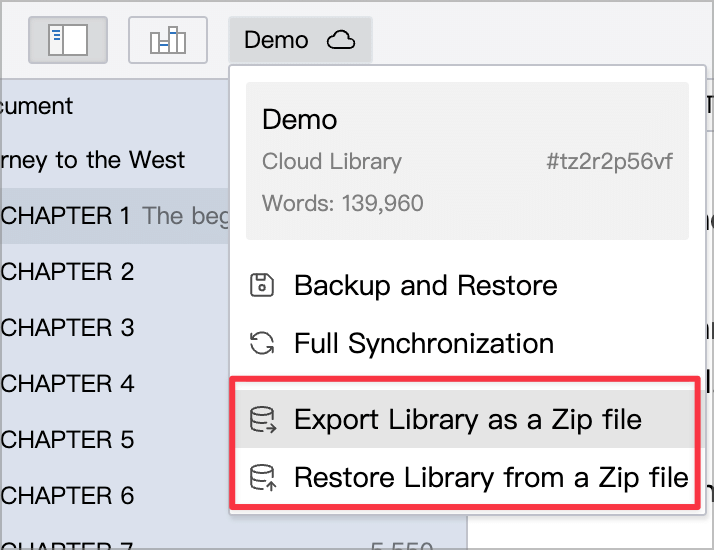Backup and Restore
Data security is very important. WonderPen has built-in a complete and reliable backup solution to minimize the risk of losing your works.
WonderPen supports manual backup and automatic backup, both of which will back up the complete Library content, including all documents, local pictures, etc.
Extra backups
Section titled “Extra backups”By default, WonderPen will save backups in each library folder (i.e., folders ending with .wplibrary). Usually this is sufficient, but there are always times when we may delete or overwrite the library folder due to accidental operation, so the backup files in it will also be lost. Therefore, we strongly recommend that you set up at least one Extra backup.
Extra backup refers to the backup located elsewhere on the hard disk. It should be located in a different location from the library, that is, the writing data and the backup data are stored separately. In this way, even if the library is accidentally deleted, the data can still be retrieved from the extra backup located elsewhere.
You can set up extra backups in the Backup panel of the Settings window, as shown below:
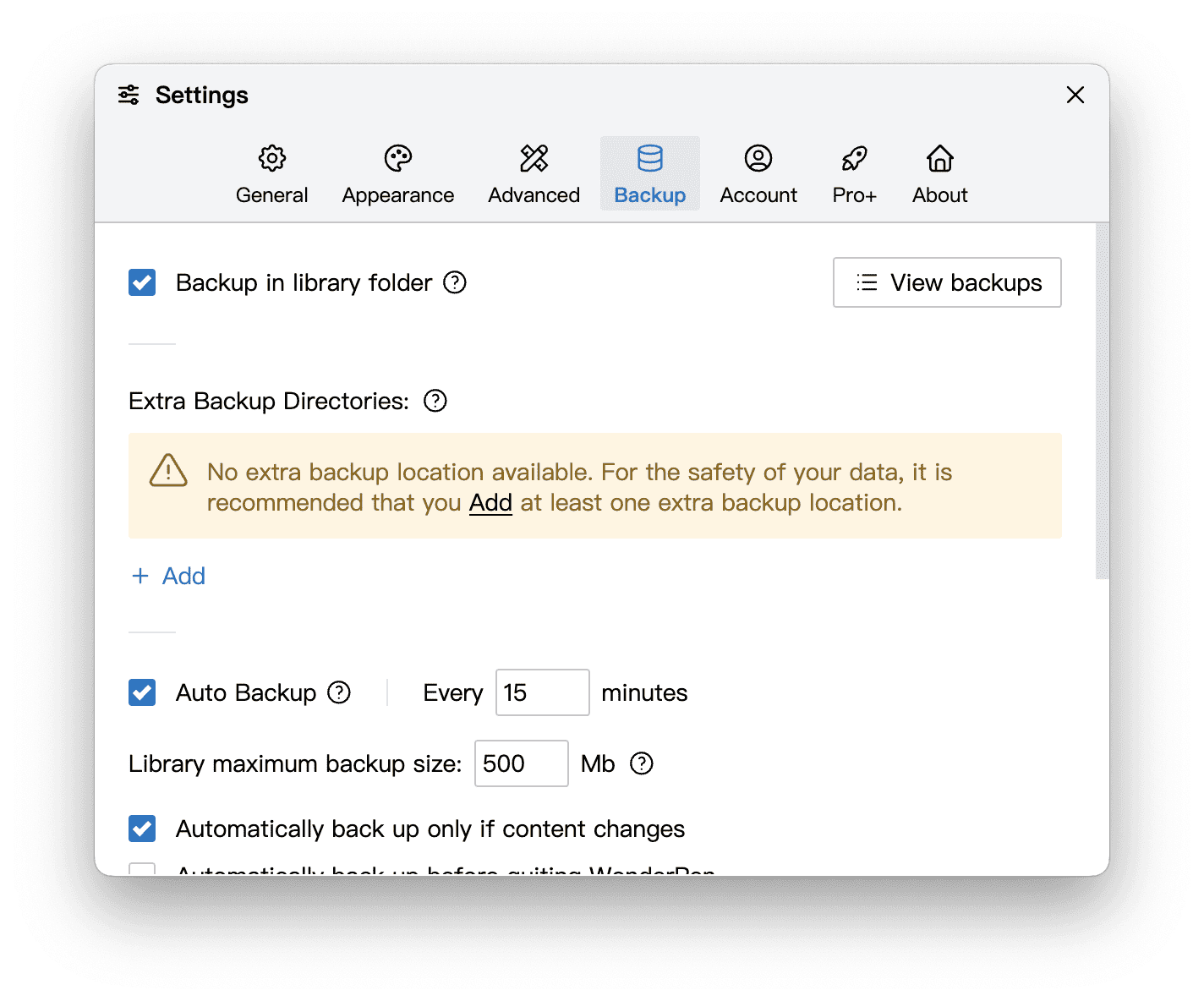
You can add one or more additional extra locations by clicking the + Add link, as shown below:
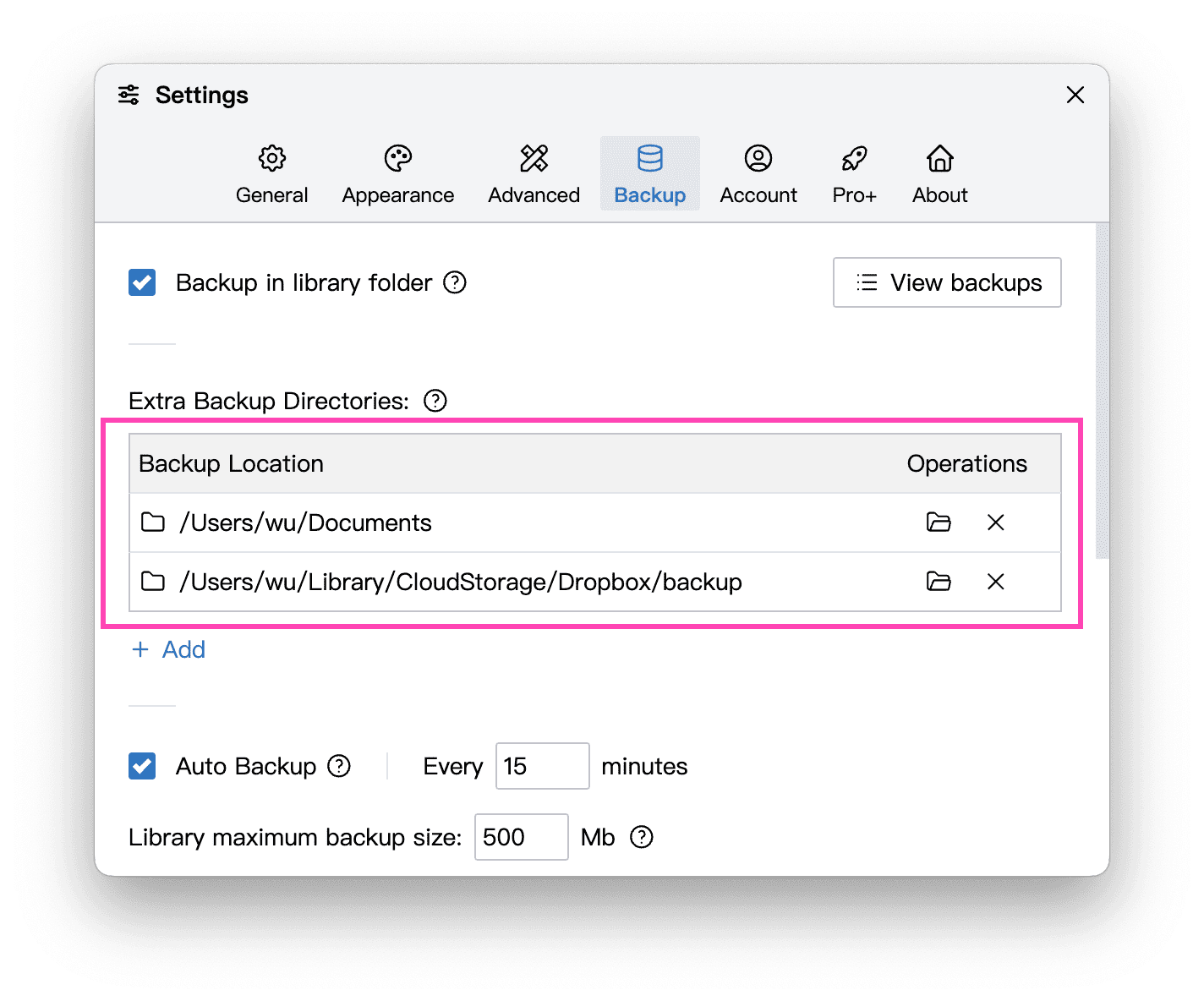
Sometimes, modifying or moving an already added backup folder may cause the folder’s permissions to change, as shown in the following figure:
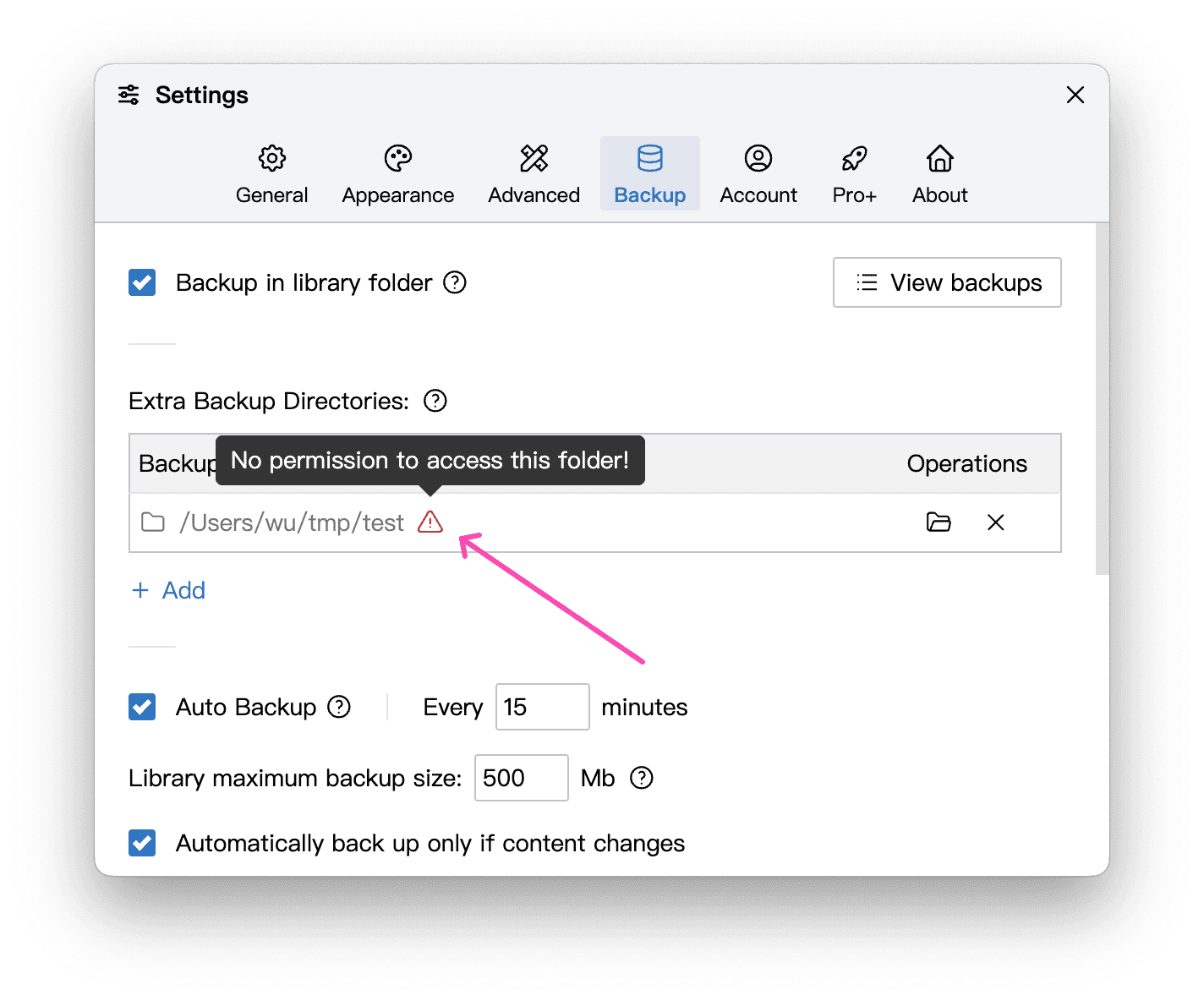
When a backup location does not have permission, there will be a prompt on this interface, and there will also be a pop-up reminder when automatic backup fails. At this time, you can delete this backup location in the above settings interface and then add a new backup location.
Auto backup
Section titled “Auto backup”By default, WonderPen will automatically back up the currently open library every 15 minutes. You can turn this feature on or off in the Settings → Backup panel, or set the time interval for automatic backup, as shown in the figure below:
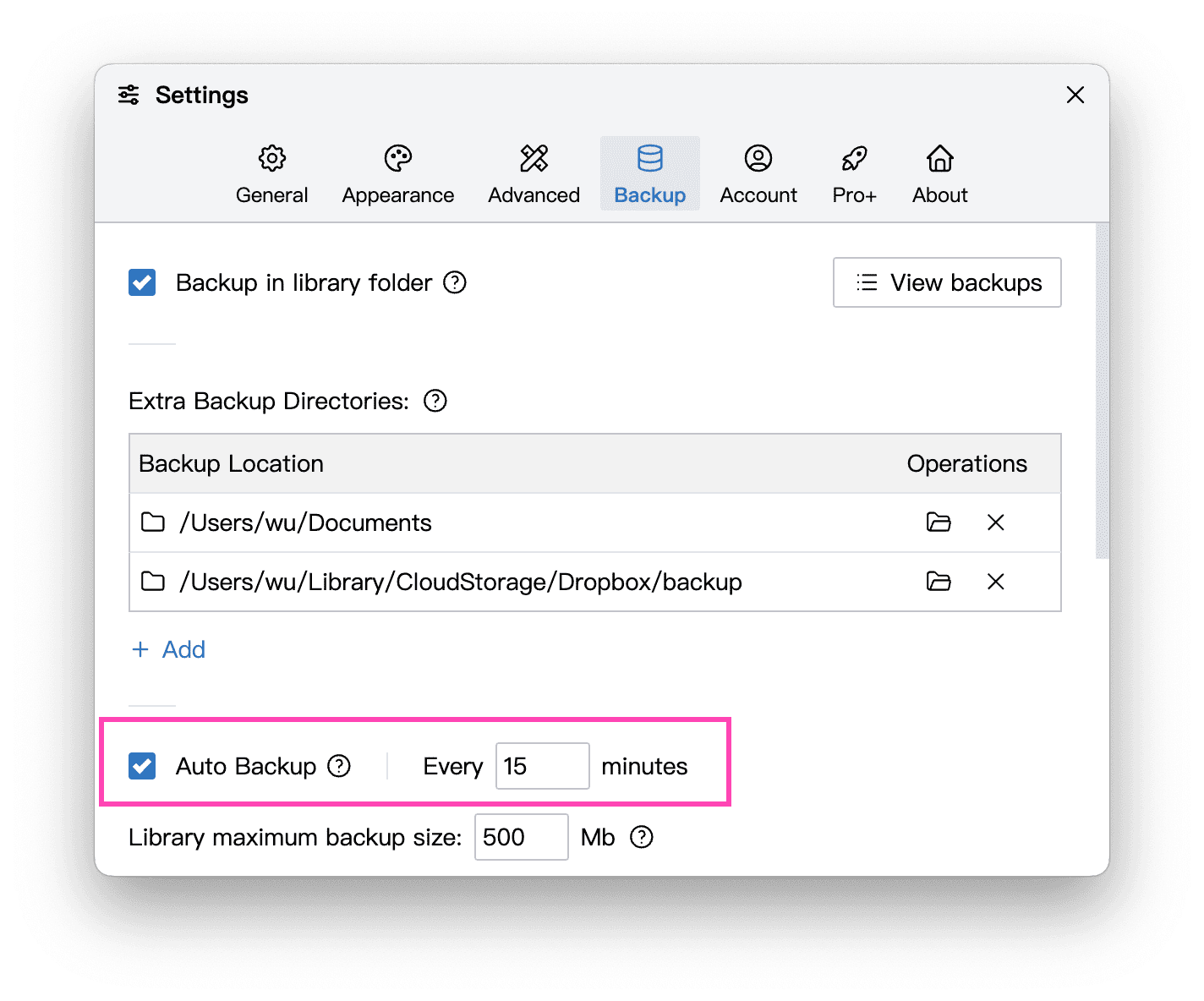
For your data security, we recommend that you always turn on “Auto Backup”.
View backup records
Section titled “View backup records”To view the backup records of the current library, click the Open button in the Settings → Backup panel, as shown in the figure below:
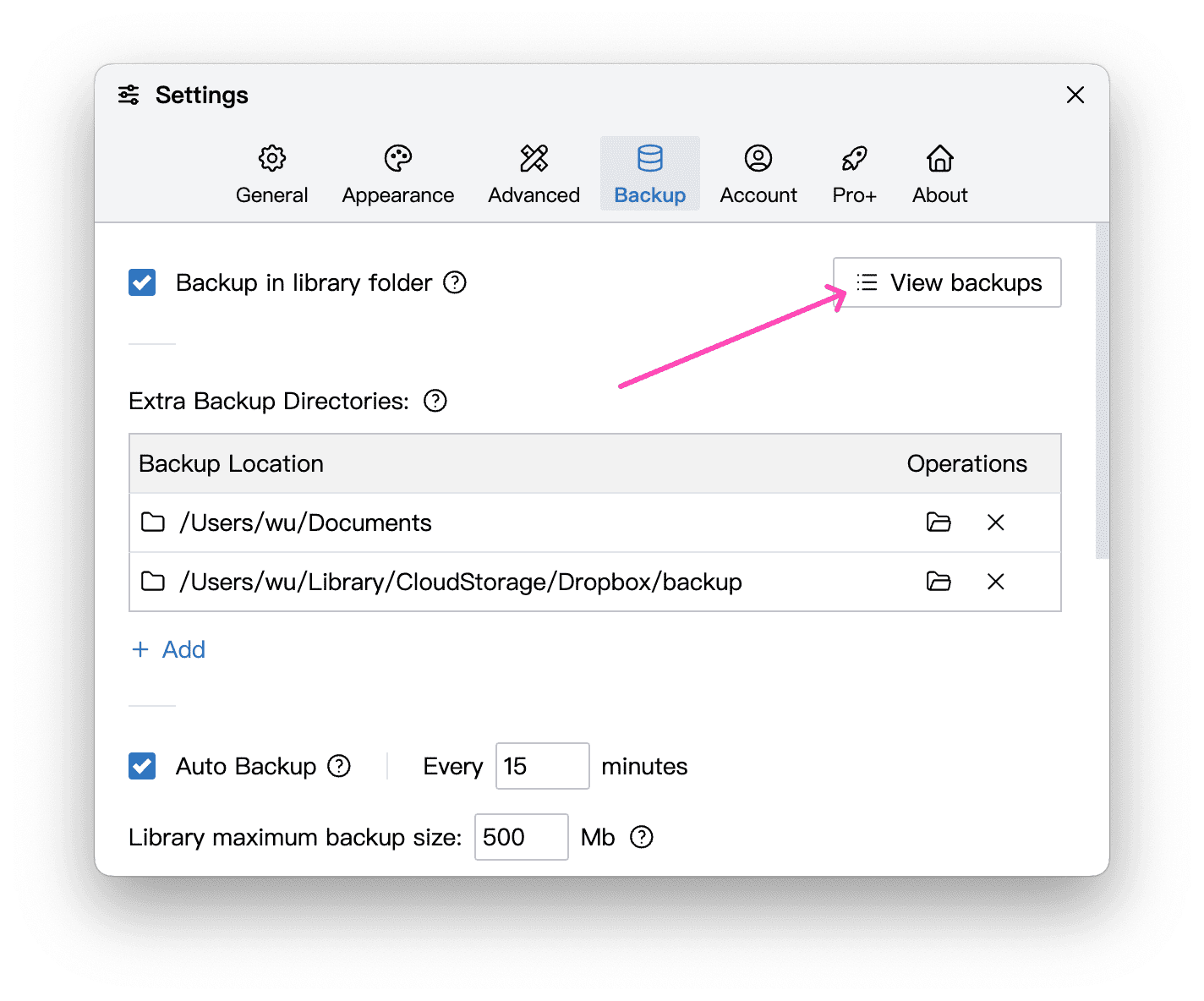
Or click the Backup and Restore menu item in the library button drop-down menu in the top bar of the editor window, as shown in the following figure:
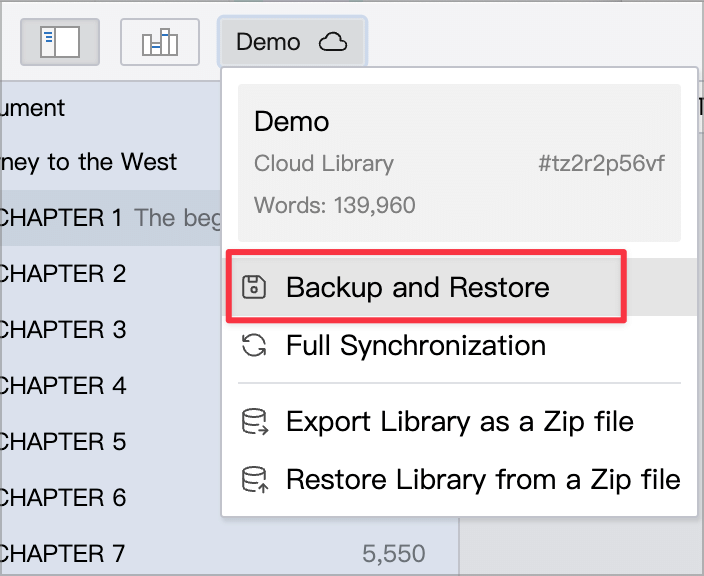
The backup list is shown below:
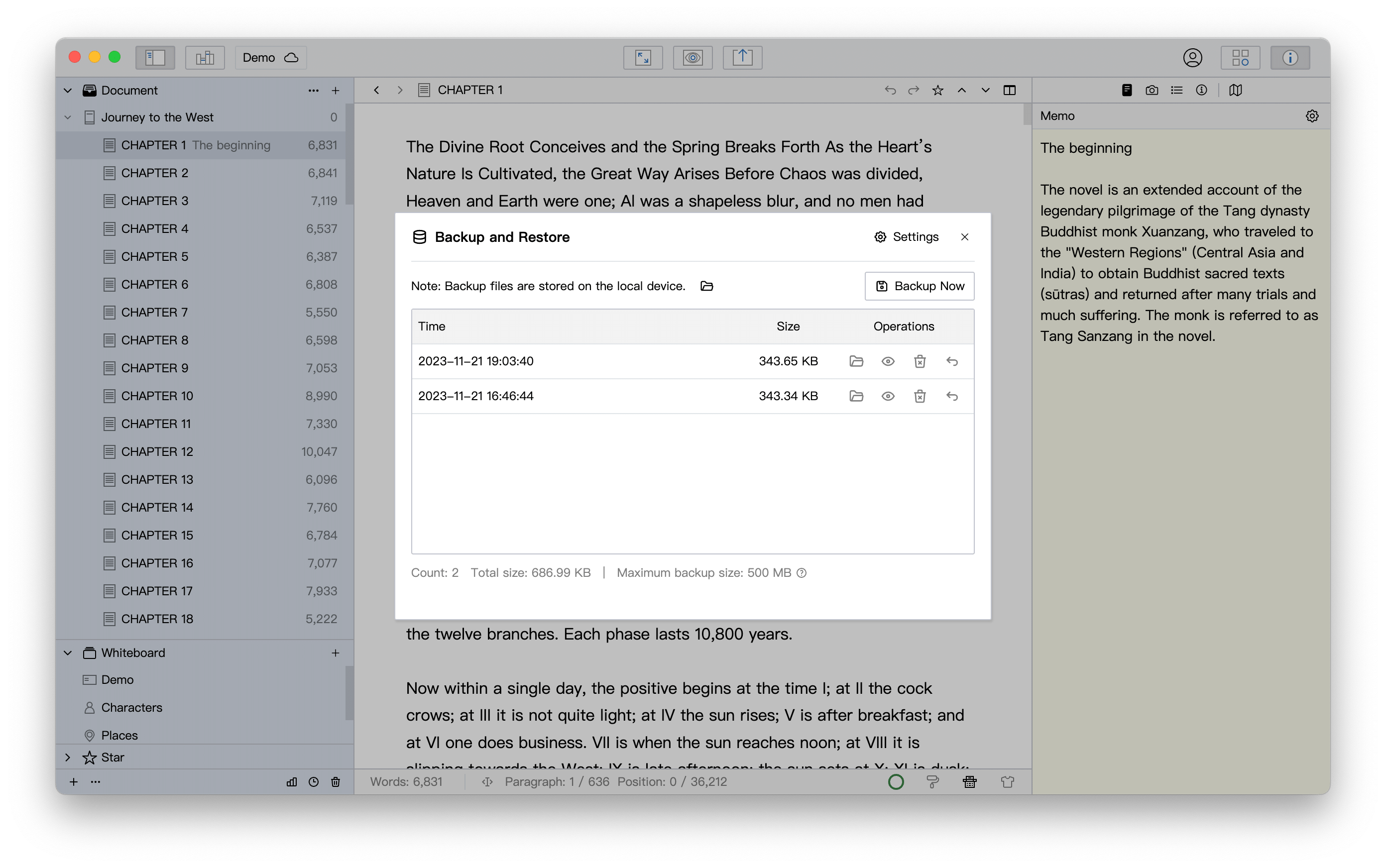
In this list, you can see the time and size of each backup, and can preview, delete, restore and other operations on it.

The four buttons in the picture above represent respectively from left to right: display the backup file in folder, preview, delete, and restore.
Manual backup
Section titled “Manual backup”In addition to automatic backups, you can also manually back up your current library at any time when needed. There are three ways to perform manual backup. One is to click the Backup Now button in the Backup and Restore panel, as shown in the figure below:
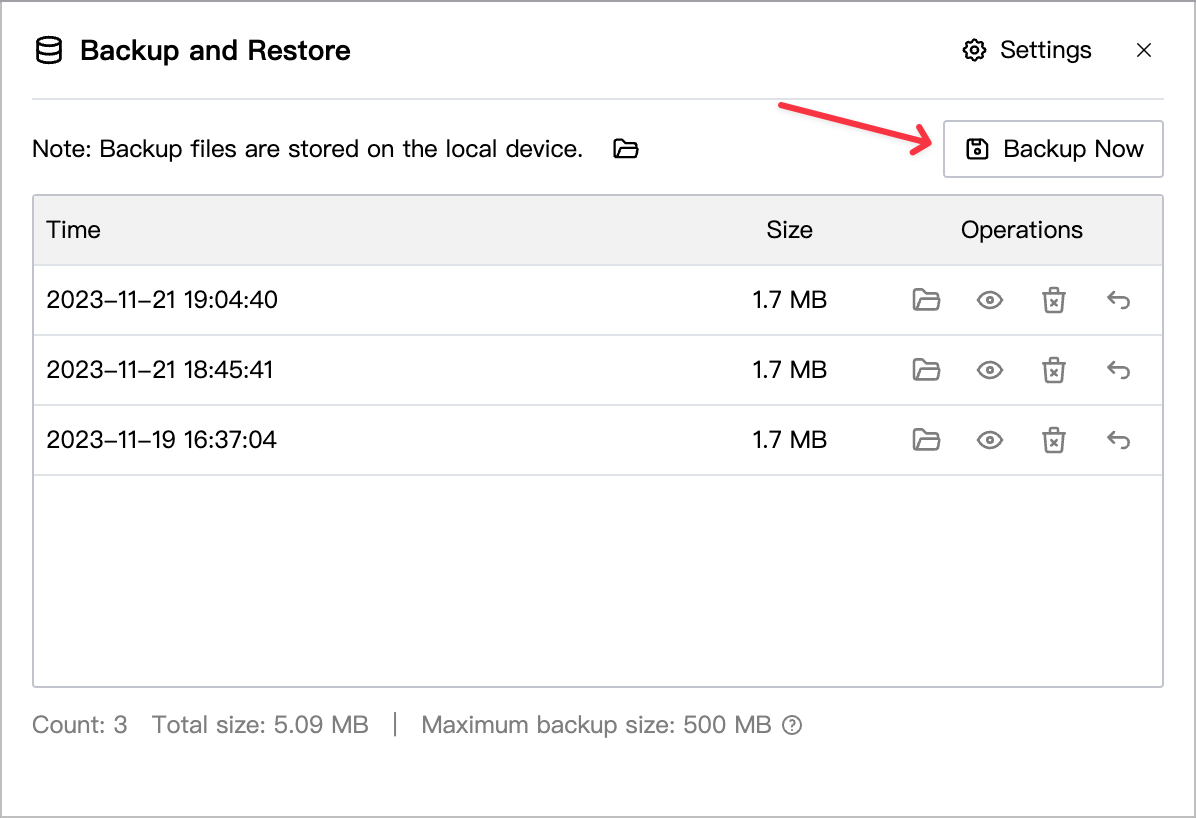
The second method is to click the Backup Now menu item in the File menu at the top, as shown in the figure below:
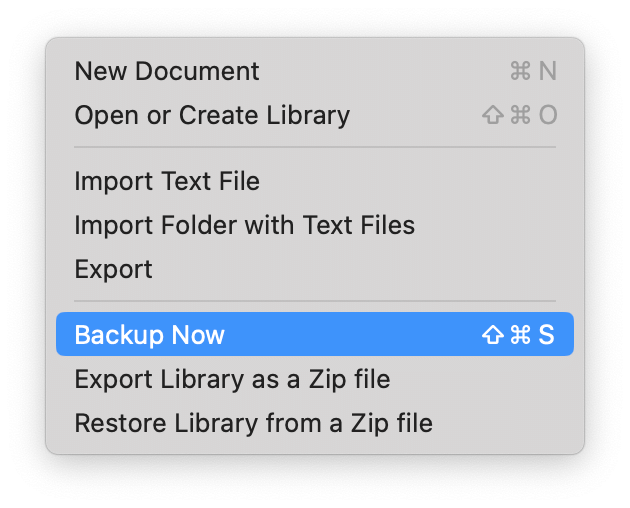
The third way is to use shortcut keys. Under macOS, press ⌘ + Shift + S in the editor to immediately back up the current library. Under Windows, press Ctrl + Shift + S.
Restore from backup
Section titled “Restore from backup”You can restore the library to a previous version at any time by using the backup file. Generally speaking, there are two types of restore operations.
Restore from backup list
Section titled “Restore from backup list”If you want to restore from the existing backup record of the library, just click the Restore button in the backup list interface to restore the current library to the backup, as shown in the following figure:
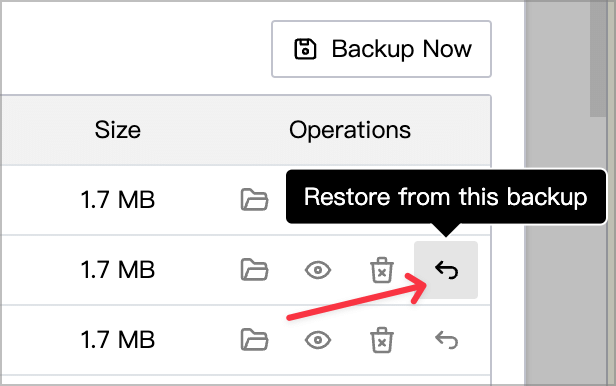
Restore from Zip file
Section titled “Restore from Zip file”If you need to restore from a specific backup file (a .zip file), follow these steps:
- Open or create a new library;
- Click the Restore Library from a Zip file menu of this library (as shown below);
- Find the corresponding backup file (
.zipfile) in the file manager and import it.
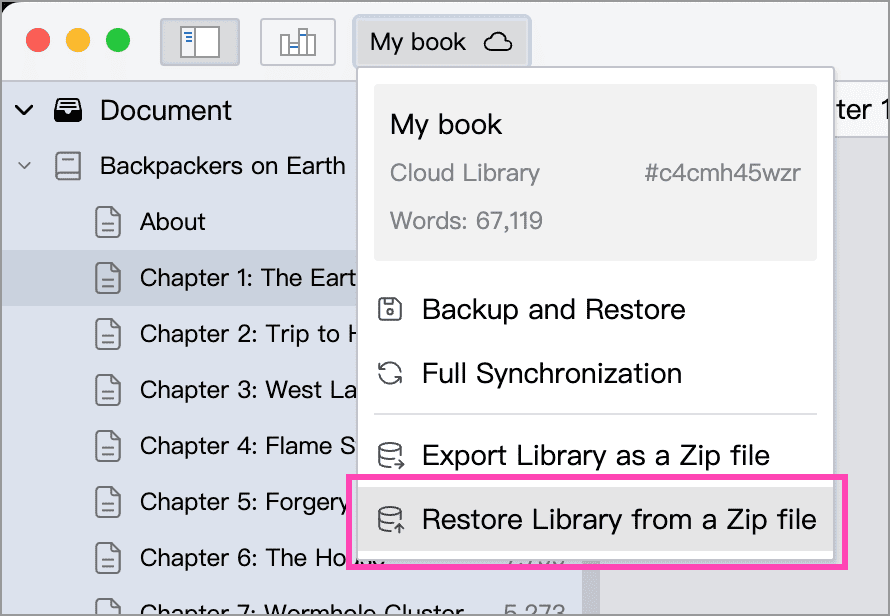
NOTE: A restore operation will usually overwrite the contents of the current library.
More operations
Section titled “More operations”In addition to the above backup and recovery operations, you can also manually export the current library as a Zip file and import it when needed. The operation entrance is shown in the figure below:
